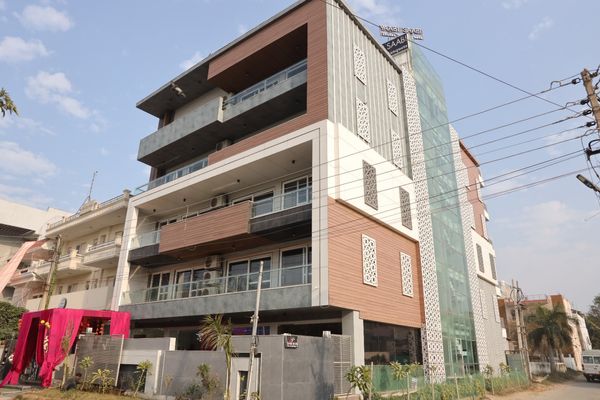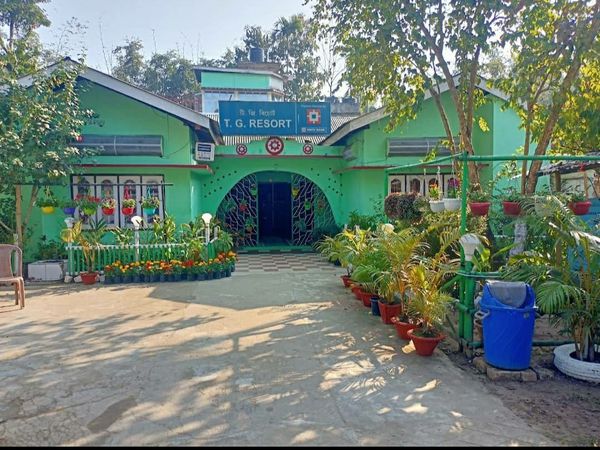Chardham Yatra with Valley of Flowers: A Journey Through Spirituality and Nature
 Manish Sah
19 Sep, 2024
11 mins read
114
Manish Sah
19 Sep, 2024
11 mins read
114

The Chardham Yatra, a revered pilgrimage in Hinduism, comprises four sacred sites: Yamunotri, Gangotri, Kedarnath, and Badrinath. Each of these destinations holds immense religious significance and attracts millions of devotees every year. Coupled with the enchanting Valley of Flowers, this journey offers not just a spiritual experience but also an opportunity to immerse oneself in the stunning beauty of nature. This article explores the essence of the Chardham Yatra and the Valley of Flowers, detailing the itinerary, cultural insights, and tips for an unforgettable journey.
Understanding the Chardham Yatra
The Sacred Sites
- Yamunotri: The origin of the Yamuna River, Yamunotri is dedicated to Goddess Yamuna. Situated at an altitude of 3,293 meters, this site is characterized by its stunning landscapes, hot springs, and serene atmosphere.
- Gangotri: Located at 3,042 meters, Gangotri is where the Ganges River originates. This site is dedicated to Goddess Ganga and is surrounded by magnificent mountains, offering tranquility and spiritual solace.
- Kedarnath: One of the twelve Jyotirlingas, Kedarnath is situated at 3,583 meters and is dedicated to Lord Shiva. The Kedarnath Temple, nestled in the Garhwal Himalayas, is a vital pilgrimage site for devotees.
- Badrinath: The final destination of the Yatra, Badrinath is dedicated to Lord Vishnu and located at an elevation of 3,133 meters. It attracts thousands of pilgrims who seek blessings and spiritual fulfillment.
The Valley of Flowers
The Valley of Flowers, a UNESCO World Heritage Site, is renowned for its stunning alpine flora and breathtaking landscapes. Nestled in the Western Himalayas, the valley is famous for its vibrant flowers, lush greenery, and diverse wildlife. It is accessible during the summer months (June to September) and serves as a perfect complement to the spiritual journey of the Chardham Yatra.
The Spiritual Journey
A Fusion of Nature and Faith
The combination of the Chardham Yatra and the Valley of Flowers allows pilgrims to experience both spirituality and natural beauty. The journey not only nurtures the soul but also rejuvenates the spirit through the serene environment of the mountains and valleys.
Itinerary for Chardham Yatra with Valley of Flowers
A typical 12-day itinerary for the Chardham Yatra with the Valley of Flowers includes the following:
Day 1: Arrival in Haridwar
- Morning: Arrive at Jolly Grant Airport or Haridwar Railway Station.
- Transfer: Group transfer to the hotel in Haridwar.
- Afternoon: Relax and acclimatize.
- Evening: Attend the Ganga Aarti at Har Ki Pauri, a mesmerizing experience.
- Overnight: Stay at a hotel in Haridwar.
Day 2: Haridwar to Yamunotri
- Early Morning: Depart for Janki Chatti by bus (7-8 hours).
- Trek: Start the trek to Yamunotri (6 km). Enjoy the scenic beauty along the way.
- Temple Visit: Visit the Yamunotri Temple and take a dip in the hot springs.
- Overnight: Stay at a guesthouse in Yamunotri.
Day 3: Yamunotri to Gangotri
- Morning: Trek back to Janki Chatti and board the bus to Gangotri (5 hours).
- Temple Visit: Visit the Gangotri Temple and enjoy the tranquil surroundings.
- Evening: Group discussions or reflections on the day’s experiences.
- Overnight: Stay at a guesthouse in Gangotri.
Day 4: Gangotri to Valley of Flowers
- Early Morning: Depart for Govindghat by bus (approximately 6 hours).
- Trek: Begin the trek to Ghangaria (13 km), the base for the Valley of Flowers.
- Overnight: Stay at a guesthouse in Ghangaria.
Day 5: Valley of Flowers Exploration
- Morning: After breakfast, trek to the Valley of Flowers (3 km).
- Explore: Spend the day exploring the vibrant flowers, unique flora, and stunning landscapes.
- Photography: Capture the breathtaking scenery and enjoy the tranquility of the valley.
- Overnight: Return to Ghangaria for the night.
Day 6: Ghangaria to Hemkund Sahib
- Early Morning: Trek to Hemkund Sahib (6 km).
- Visit: Pay your respects at the Gurudwara and enjoy the serene surroundings.
- Afternoon: Return to Ghangaria.
- Overnight: Stay at a guesthouse in Ghangaria.
Day 7: Ghangaria to Badrinath
- Morning: Trek back to Govindghat and drive to Badrinath (3 hours).
- Temple Visit: Visit the Badrinath Temple and participate in evening prayers.
- Overnight: Stay at a hotel in Badrinath.
Day 8: Badrinath to Kedarnath
- Morning: Attend morning prayers at Badrinath Temple.
- Drive: Depart for Kedarnath via Gaurikund (8-9 hours).
- Trek: Begin the trek to Kedarnath (16 km).
- Overnight: Stay at a guesthouse in Kedarnath.
Day 9: Kedarnath Exploration
- Morning: Participate in morning prayers at Kedarnath Temple.
- Exploration: Visit nearby sites such as Bhairav Temple and enjoy the picturesque surroundings.
- Evening: Group discussions and sharing experiences.
- Overnight: Stay at Kedarnath.
Day 10: Kedarnath to Haridwar
- Trek: Return to Gaurikund and drive to Haridwar (approximately 10 hours).
- Evening: Arrive in Haridwar and check into the hotel.
- Free Time: Explore local markets or relax.
- Overnight: Stay at a hotel in Haridwar.
Day 11: Haridwar to Rishikesh
- Morning: Depart for Rishikesh (1 hour).
- Sightseeing: Explore famous landmarks such as Laxman Jhula, Ram Jhula, and Triveni Ghat.
- Evening: Participate in the Ganga Aarti at Triveni Ghat.
- Overnight: Stay at a hotel in Rishikesh.
Day 12: Departure from Haridwar
- Morning: Enjoy breakfast and reflect on the journey.
- Afternoon: Depart for onward travel from Haridwar or Dehradun Airport.
Essential Tips for the Journey
Health Precautions
- Consult a Doctor: Prior to the journey, consult a healthcare professional about altitude sickness and any pre-existing conditions.
- Stay Fit: Engage in regular physical activity to build stamina for trekking and walking.
Packing Essentials
- Clothing: Pack warm and layered clothing, as temperatures can vary significantly.
- Footwear: Comfortable trekking shoes are essential for long walks.
- Personal Items: Bring necessary toiletries, medications, and a first-aid kit.
Respect Local Customs
- Dress Modestly: Wear respectful clothing when visiting temples and sacred sites.
- Follow Guidelines: Adhere to the guidelines set by local authorities, especially regarding photography and rituals.
Cultural Insights
Local Cuisine
During the Yatra, indulge in local cuisine. Some must-try dishes include:
- Aloo Puri: A traditional breakfast of deep-fried bread served with spiced potatoes.
- Garhwal Ka Fannah: A nutritious barley dish.
- Kachori: A spicy deep-fried pastry, perfect for snacking during the trek.
Engaging with Local Communities
Interactions with local communities can enrich your experience. Engage in conversations, participate in local festivals, and learn about their traditions and lifestyle.
Spiritual Practices
Immerse yourself in local spiritual practices, such as morning prayers and rituals at the temples. The atmosphere created by chants, incense, and the sound of bells enhances the spiritual experience, allowing you to connect with your faith on a deeper level.
Conclusion
The Chardham Yatra, coupled with a visit to the Valley of Flowers, offers a unique blend of spirituality and natural beauty. This journey allows pilgrims to explore their faith while experiencing the enchanting landscapes of the Himalayas. The serene environment, vibrant flora, and rich cultural heritage create a holistic experience that nourishes the soul.
As you embark on this transformative journey, remember to embrace the spiritual essence of each destination, connect with fellow pilgrims, and take in the breathtaking beauty that surrounds you. The Chardham Yatra with the Valley of Flowers is not just a pilgrimage; it is a celebration of life, nature, and spirituality.
Written By:
Manish Sah



Hotels at your convenience
Now choose your stay according to your preference. From finding a place for your dream destination or a mere weekend getaway to business accommodations or brief stay, we have got you covered. Explore hotels as per your mood.





